Magazine
The Big Picture

Afsana Amarsy's Land of the Tiger brings India to the IMAX
|
As you sit in the dark, the huge striped cat makes ferocious eye contact with you, slowly moves towards you – and then lunges at you! Cascading waterfalls surround you, and yes you can almost feel the spray on your body and feel the twists and turns of the Ganges as you travel on a small dinghy at the foot of the Himalayas. And in the crowded cities, you can feel the rush of humanity; hear the deafening noise of traffic, the bustle of a billion people on the move.
Welcome to India – Afsana Amarsy’s India. She is the producer of India: Kingdom of the Tiger, the first ever Imax film on India and has bottled the essence of the wondrous colors, sights and sounds of the sub-continent in this spectacular format. The film is collaboration between the National Wildlife Federation and Primesco, the Montreal-based company owned by Afsana and her husband Ghoulam, and explores the plight of the endangered Bengal tiger, India’s national animal. The film will screen for six months at the American Museum of Natural History Rivers, churning masses of humanity, sunsets, temples and mountains all come alive as do the magnificent Bengal tigers to which the film is a tribute. Seen on a forty-foot screen, everything is larger than life, as it should be in the case of a complex country like India.
Perhaps not so large but equally compelling is the story of Afsana herself. She is the face of the Diaspora, the face of the Indians who left the shores of India more than ten decades ago, but in a sense, never really left India. Indeed, those who think that New York City is the center of the world should meet Afsana, for she hreflects the other face of the Indian Diaspora, the millions living in different parts of Africa, former European colonies, for whom Paris or Belgium is the center of their world.
Afsana looks very much Indian but has a charming French accent, and speaks Gujarati, English, French and Malagassi fluently. “I was born in Madagascar but my great-grandparents left India 120 years ago,” she says. And indeed, Afsana, whose family is Gujarati Shiah Ishnashris (Khoja Shiahs who believe in the 12 imams) from Kathiawar, is the first one in her family to re-link to the land of her birth. Madagascar, which was a French colony and largely Christian, has about 30,000 people of Indian origin who have kept their customs and traditions intact, in spite of the French influence. Explains Amarsy, “Indians brought a lot of customs and traditions from India, even materials, and we did trading with India. My grandparents were in farming but later got into small trading. “Although we rarely went back to India, we lived clan-like, keeping all our Indian customs; we married always only amongst our own community and many went back to India to get married so the group became bigger.” Growing up in a French colony, Afsana is fluent in French and Malagassi, but Gujarati is still her first language, even for her children who are now the fifth generation born outside of India. In fact, some old Gujarati words that may have disappeared from the language in India are still in their vocabulary. The Indians of Madagascar celebrate all Indian festivals and then some: “In Madagascar there were very small communities of Hindu, of Shiah-Khojas, of Ismailis, of Boras, so we celebrated everything because being a very small group, we needed each other. We celebrate Eid, but we celebrate as much Diwali and as much Christmas, because of the French and Christian influence.”
Yet Paris was always the be-all and end-all of things. Due to the political tensions in Madagascar, many of the Indians established themselves in France and it was there that Afsana met Ghoulam, whose great grandparents had also migrated from Gujarat, possibly on the same boat as her ancestors. After finishing their education in Paris, the two got married and set off for America where both pursued MBAs at Harvard University. The couple moved to Montreal and got into commercial real estate, gradually moving into entertainment real estate and then eventually into financing and producing Imax movies. They have produced over 7 Imax films, including the highly rated Super Speedway and Mysteries of Egypt, which were big successes all over the world. Afsana recalls, “India was always a passion for me. In the millennium year we decided to go to India for the first time with our children and see where we came from. In my mind, India had always been like Africa, small villages, everything small. But when I reached Mumbai, Mumbai was huge, it was big! India was completely different from my image. It was a spectacular India and I thought it had to be put on an Imax large format screen. It would be incredible to see the colors and people, the whole spectrum.” Why did it take her so long to go back to India? She explains, “In a way there was always a fear in me to go back to India because no one had ever gone back, there was no link anymore, no family, no connections, no people.” It was only when she went to Harvard, and later in Canada, that she met Indians from India, and thus got re-connected with India.
The Amarsys landed in India with a crew of five and found India was a real learning curve, especially when you’re trying to shoot an Imax film. She recalls, “Nobody knew how to shoot on Imax in India and we were bringing a new technology to the country. When the film rolls and equipment landed in Mumbai it took three days to retrieve them from the customs, everything was dismantled completely. They didn’t believe it was film rolls! It’s huge film and he camera itself weighs one ton!” The film is directed by Bruce Neibaur, the American director of Mysteries of Egypt and the costume design is by Bhanu Athaiya, who won an Oscar for her work in Gandhi. The Amarsys selected a mixed cast and crew from India and Canada and completed the film in 18 weeks in 17 cities across India, in spite of grueling heat, traveling through rough terrain and the tremendous weight of the camera. As the Amarsys like to point out, if all the rolls of film shot for India: Kingdom of the Tiger was lined up, it would total 51 miles of 70 mm film! Since they are distributors of Imax films they have connections with all the high profile museums that generally show Imax films. A year ago India: Kingdom of the Tiger premiered at the British Film Institute in London, and since then it has been playing in Taiwan, Japan, South Africa, and Canada. The film also had its premiere in Paris last month, and the posters are all over the Paris Metro.
Ask Afsana for her most memorable moment in India and she laughs, “Oh, there were plenty. But personally it was Benares – don’t forget I’m Muslim; I’ve been to Hajj a few times. But Benares was incredible. You can see how human beings have so much faith, and you forget the world there, you belong to another world there. It’s an experience you never forget.” Meanwhile, the couple is starting work on their next film, America, America! a celebration of the U.S. Afsana explains that it generally takes three years to pull the financing together because an Imax film can cost $5 million, and they anticipate that the film on America could cost $10 million. However, there is a good chance of success, because Imax films have a long shelf life and can keep opening in different countries for over seven years. The Amarsys are in the process of developing an Imax theater in Delhi in Pragrati Maidan, which will be connected with the cultural center there. There is already an Imax Theater in Mumbai and one in Kolkota, so Delhi, with its governmental, academic and tourist connections was considered a logical choice. The plan is to add in additional footage and showcase the India film as a destination film, playing on a perpetual basis at the new Imax Theater.
For Afsana, the film is also a personal reward, a chance to connect back to the land of her ancestors. ” It’s amazing, I’ve lived in many countries and I’ve traveled all around the world, yet I’ve remained hundred percent Indian, I behave Indian, think Indian and believe in everything Indian, even when I had never been there!” She marvels, recalling the excitement of first landing on Indian soil, looking around and seeing millions of people of her own ethnicity together for the first time: “You can leave a country for 120 years, but it still stays in your system, in your blood.” |

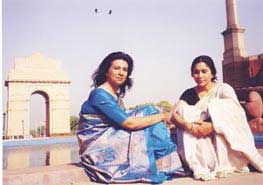
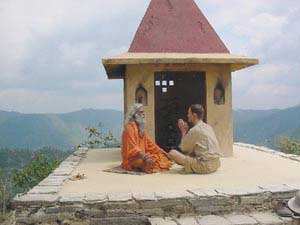
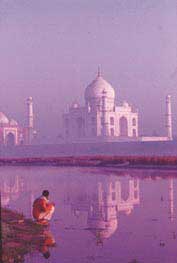

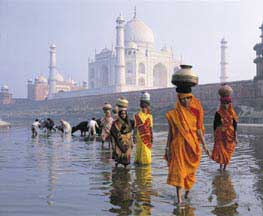
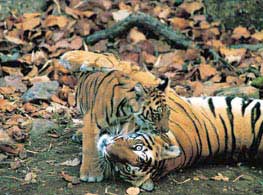
You must be logged in to post a comment Login